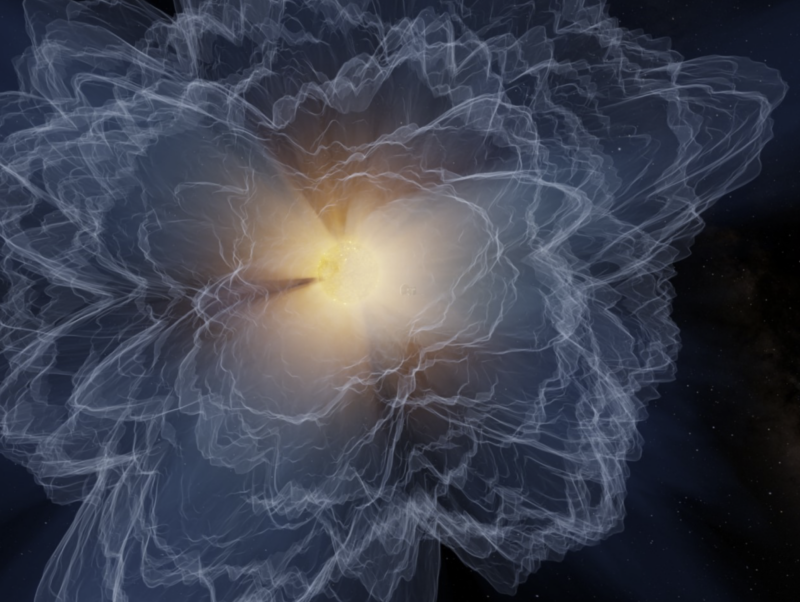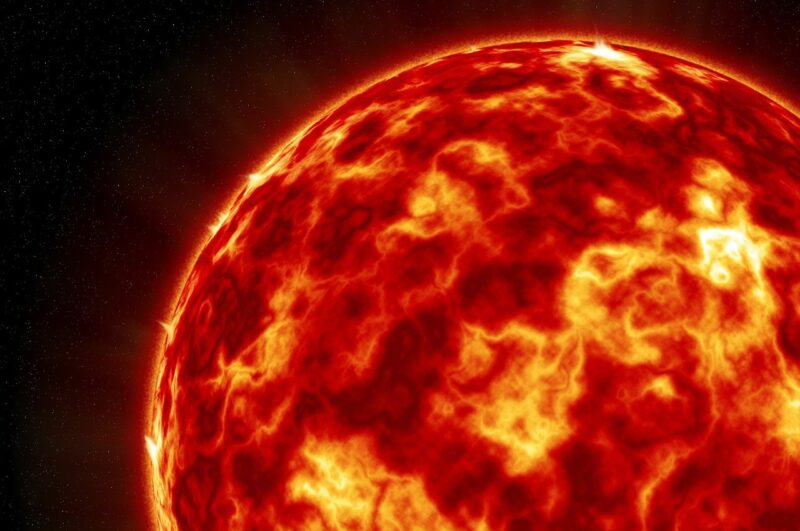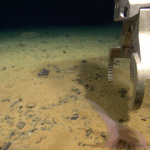Now Reading: Young, massive exoplanet is in an unusual double star system
-
01
Young, massive exoplanet is in an unusual double star system
Young, massive exoplanet is in an unusual double star system
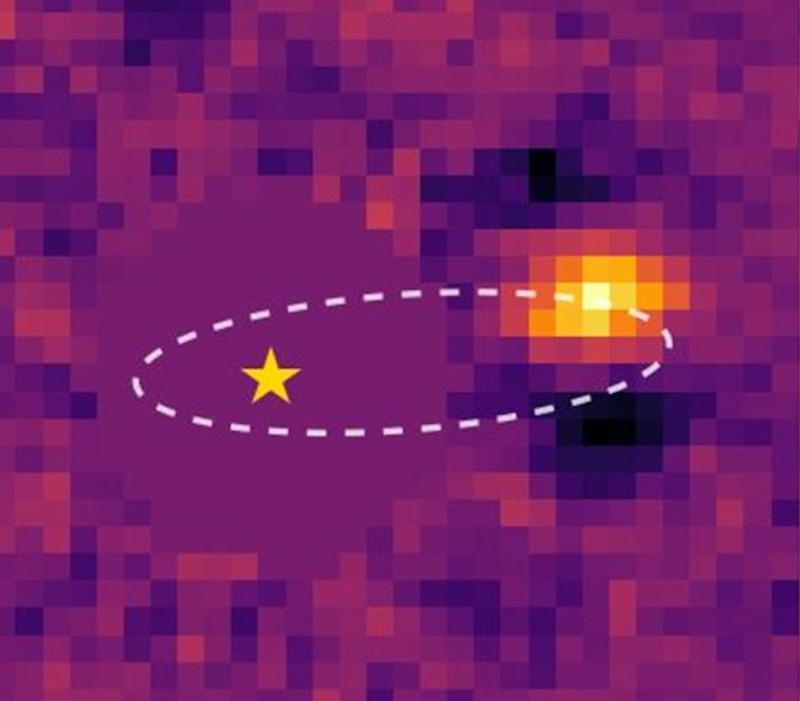
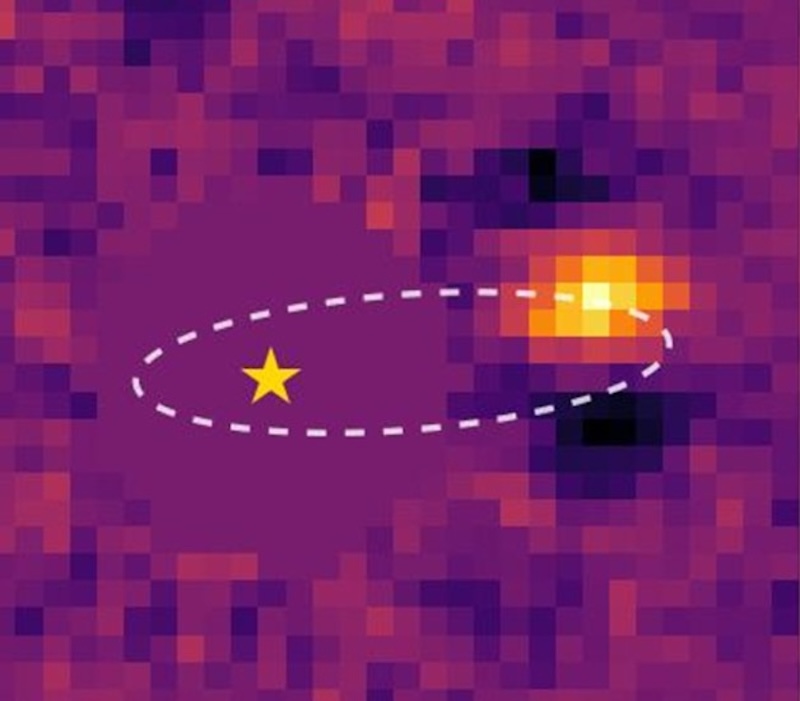
- HD 135344 AB is a system of young binary stars that orbit each other. They are 440 light-years from Earth, in the constellation Lupus.
- Star B still has a planet-forming disk, but star A no longer does. So an international team of astronomers wondered if star A had any fully formed planets. They found one, a giant planet 10 times as massive as Jupiter.
- Planetary formation can occur at different rates for each star in a binary system, the results show.
Giant exoplanet and planet-forming disk in the same binary star system
Astronomers have imaged a growing number of exoplanets around distant stars. And they’ve also imaged the disks of gas and dust swirling around stars where planets are born. But what about both in the same star system? An international team of astronomers has found just that, using the European Southern Observatory’s Very Large Telescope (VLT) in Chile. The researchers, led by Tomas Stolker at Leiden University in the Netherlands, said on July 9, 2025, that they observed the binary star system HD 135344 AB, approximately 440 light-years away in the constellation Lupus. They found a young gas giant planet orbiting one of the stars and a planet-forming disk around the other star.
The two young stars, A and B, orbit each other at a great distance from each other. The planet orbiting star A is still young, only about 12 million years old. It’s about 10 times as massive as Jupiter and has an orbit similar to that of Uranus.
The researchers published the peer-reviewed results of their findings in the journal Astronomy & Astrophysics on June 22, 2025.
Young giant planet orbiting one star, planet-forming disk around same-aged companion starResearch by Tomas Stolker with ESO's VLT. Accepted for publication in A&A.News item: www.astronomie.nl/ni…
— astronomie.nl (@astronomienl.bsky.social) 2025-07-09T07:01:04.000Z
A young, massive exoplanet for star A
Astronomers knew star B had a planet-forming disk, aka a protoplanetary disk. That’s the rotating disk of gas and dust around a new star where planets are born. Star A doesn’t have its disk any longer, so astronomers wondered if it had any planets. And it does! Stolker said:
Star A had never been investigated because it does not contain a disk. My colleagues and I were curious if it had already formed a planet. And so, after four years of careful measurements and some luck, the answer is yes.
The astronomers found and imaged the planet using the SPHERE instrument on the Very Large Telescope. At such a great distance from us, however, the planet still just looks like a bright dot. But it’s there. At first the astronomers also thought it might be a background star instead of a planet. But they ruled that out using the GRAVITY instrument on the telescope. GRAVITY combines the incoming light from all four of the large telescopes that comprise the Very Large Telescope.
The astronomers observed both the star and planet seven times over four years. They moved together in space, showing it was truly a planet orbiting the star. But it wasn’t easy, as Stolker noted:
We’ve been lucky, though. The angle between the planet and the star is now so small that SPHERE can barely detect the planet.

Different timelines
The results show that in binary star systems, planetary formation can occur at different rates for each star. In this case, star A has already finished forming planets, while star B still has its original protoplanetary disk. Given that the two stars are so far apart, the researchers concluded that their protoplanetary disks evolved independently. The paper states:
While planet formation appears to be ongoing at HD 135344 B, the circumstellar environment of the A0-type primary star, HD 135344 A, is already largely depleted … HD 135344 A and B are proper-motion binary partners with an angular separation of 21.2 arcseconds (2,800 AU), and their circumstellar disks have therefore likely evolved independently, depending on the eccentricity of the orbits.
One AU (astronomical unit) is the approximate mean distance between the Earth and sun. That’s 93 million miles (150 million km). So the separation between the two stars in HD 135344 AB is 2,800 times that distance.

Future observations
The new observations of HD 135344 Ab are just the first, the astronomers said. This includes using the GRAVITY instrument. Later, they hope to also use the Extremely Large Telescope (ELT), which is still being built in the Atacama Desert in Chile.
The ELT will be able to study the planet in greater detail than the Very Large Telescope. In addition, astronomers can use it to search for gas giant planets around other young stars, which have similar orbits as HD 135344 Ab.
Bottom line: HD 135344 Ab is a young, massive exoplanet orbiting a star in a binary star system 440 light-years away. The other star still has its planet-forming disk.
Source: Direct imaging discovery of a young giant planet orbiting on Solar System scales
Read more: Witnessing a solar system’s dawn, for the 1st time
Read more: Can binary-star planets support life?
The post Young, massive exoplanet is in an unusual double star system first appeared on EarthSky.
Stay Informed With the Latest & Most Important News
-
 012024 in Review: Highlights from NASA in Silicon Valley
012024 in Review: Highlights from NASA in Silicon Valley -
 02Panasonic Leica Summilux DG 15mm f/1.7 ASPH review
02Panasonic Leica Summilux DG 15mm f/1.7 ASPH review -
 03From Polymerization-Enabled Folding and Assembly to Chemical Evolution: Key Processes for Emergence of Functional Polymers in the Origin of Life
03From Polymerization-Enabled Folding and Assembly to Chemical Evolution: Key Processes for Emergence of Functional Polymers in the Origin of Life -
 04How New NASA, India Earth Satellite NISAR Will See Earth
04How New NASA, India Earth Satellite NISAR Will See Earth -
 05And Thus Begins A New Year For Life On Earth
05And Thus Begins A New Year For Life On Earth -
 06Astronomy Activation Ambassadors: A New Era
06Astronomy Activation Ambassadors: A New Era -
07SpaceX launch surge helps set new global launch record in 2024












